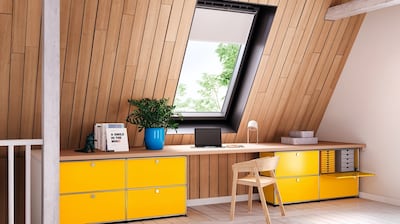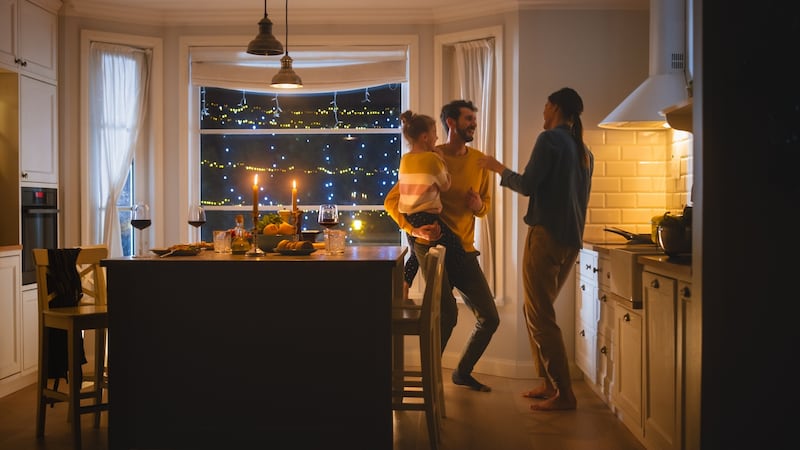An Insta-friendly en suite is a nice-to-have, but when it comes to renovations Irish homeowners are prioritising comfort above all else. That’s the consensus of those involved in the construction industry, who add that they have never been busier as people ditch DIY and call in the experts.

Renovate magazine looks at the renovation boom in Ireland which has seen homeowners investing in extending, renovating, retrofitting and redecorating their homes.
[ The Irish Times ePaperOpens in new window ]
Comfort may be key, but the added incentive of lower energy bills is also driving people to consider upgrading their homes with new windows and doors, more efficient heating systems and added insulation.
Extensions are also top of the list as people find themselves working from home or with adult children staying at home longer.
And while labour shortages and soaring material inflation are impacting the pockets of those keen to rejuvenate their homes, this hasn’t stopped them – while many are using savings accrued during the pandemic, others are happy to seek additional finance. Recent data from the Banking and Payments Federation Ireland (BPFI) showed that more than 43,000 home improvement loans were drawn down in 2021, while research from Aviva Insurance last year suggested over €11 billion had been spent by more than 1.5 million homeowners on home improvements in the past 12 months.
James Benson, director of housing, planning and development services with the Construction Federation of Ireland, says its members are seeing a “huge increase” in demand for skilled builders and tradespeople to work on renovations and extensions.
“People, over time, will always want to rejuvenate and revitalise their own homes but we are seeing such an increase in the level of interest. People have greater spending power and have spent the past two years looking at their homes and thinking about how they can improve it,” Benson says.
“We are also seeing so many people considering renovations and extensions to their existing homes because perhaps they have family members who can’t move out because of the paucity of new homes on the market. We are seeing a lot of attic conversions or extensions to the side or the rear of the house.”

Anything built over 12-15 years ago will not be well insulated and will not be airtight; it will not be damp, but it will be cold and it will not hold the heat
This also applies to those moving house who may have snapped up a second-hand dwelling in the right location but minus the creature comforts they have come to expect, says quantity surveyor Patricia Power.
“Our standards have risen,” says Dermot Bannon’s former right-hand woman on RTÉ’s Room to Improve. “People aren’t willing to move house any more and accept what they are buying – an old house with a low energy rating. They don’t want a cold, draughty, damp home, people want the nice warm thermal comfort and they are willing to pay for it.”
Power says there has been “amazing feedback and buzz” about the recently announced National Retrofitting Scheme and she points out that any home built more than a decade ago – prior to new building regulations on air tightness and insulation – could probably benefit.
“Anything built over 12-15 years ago will not be well insulated and will not be airtight, so even if you have a lovely home, well built and structurally sound but 15 years old – it will not be damp, but it will be cold and it will not hold the heat.”
Bringing this up to scratch may take a large chunk of your renovation budget but it will be worth it, she says. “You can’t spend enough on insulation in my opinion and going with the insulation is the air tightness, which in a retrofit you can do it around windows and skirting levels – it is a very simple process but without it it’s like putting on a lovely warm coat and not zipping it up,” she warns.
And people are increasingly happy to spend to make these changes, says Barry Shevlin, managing director of Global Home Improvements, which offers doors, windows and insulation solutions. “But we have always had people looking for that change in comfort, and not just looking for smaller energy bills.”
People have changed how they are interacting with their home, Shevlin says. “Whether it is working from home or simply spending more time in their home, that has become so much more important. People were coming and going a lot more before Covid, so they had time to notice this over the past couple of years. Your home is your castle as the old saying goes and that’s really come to the fore now, so many people are thinking of making improvements.” As a result, demand is peaking; Shevlin says there is at least a three-month wait for windows and doors at present.
Similarly, Peter Campbell of Energlaze says there has been a huge spike in demand in recent times for energy-efficient products. “People want to save on their energy bills but the key factor is comfort; demand has been increasing as there is a move towards more measures that will make homes more comfortable.”
New window frames will make a house airtight but can also transform the look and feel of a home, he adds. The big movers for Energlaze in the past two years have been windows and doors, and Campbell says they have also been busy as the only company in Ireland retrofitting windows in period homes.

Along with an eagerness to reduce energy bills is the general shift away from fossil fuels being used to heat our homes. David McConnell of Mitsubishi Electric Ireland says the vast majority of new-build homes will employ an air-sourced heat pump but retrofitting one is increasingly an option for homeowners seeking more sustainable and efficient heating solutions as part of a larger renovation. “People are starting to think green and think about their actions and how it impacts the environment.”
A heat pump – which McConnell says is simply like an electric boiler that sits outside your home – is 400 per cent efficient. Compare that with a standard boiler’s 90 per cent efficiency and the maths do themselves. “If you are changing from oil, the cost savings are in the region of 50 per cent whereas with natural gas they are in the region of 20-25 per cent,” he says. And again, it all comes back to comfort. “With a heat pump, your house is always at the same temperature; you just set the thermostat.”
What people may have been quoted for work last year, that price will have already changed
Of course, no article about renovations can conclude without mentioning the problem of soaring building costs, as the price of materials continues to rise and labour shortages have their impact. Benson says labour shortages in some of the key trades are even more pronounced in the renovations space as they tend to be busy working on new builds. Meanwhile, the price of timber and steel continues to climb.
“What people may have been quoted for work last year, that price will have already changed because of material inflation and also the shortage of labour causing price increases,” Benson explains.
Power says a proper renovation and refurbishment on an existing home is costing €250-300 per sq ft, while extensions can be even more expensive. “I have clients spending over €500 per sq ft on an extension,” she admits. “There isn’t a trade within that that haven’t increased their prices or any materials that haven’t increased in price in the past 12 months.” Something to bear in mind as you crank up the heating yet again.
Most popular renovations
New windows and doors: In a bid for extra comfort, people are seeking to update the envelope of their house by choosing state-of-the-art windows and doors. Additional benefits include enhanced security and a change to the aesthetics of the house.
Insulation: Even during a mild winter, a draughty house can be uncomfortable. People are choosing to insulate and make their homes airtight as energy bills soar.
Extensions: Enough time was spent within our four walls during the pandemic that people began to think about how their homes functioned. For many, more space was the best option.
Renewable heating systems: The soaring cost of fossil fuels coupled with a climate change epiphany means many people are seeking viable – and more efficient – alternative options to oil or gas.
Kitchens: The kitchen is the heart of the home and many people are seeking to update and rejig what is no longer simply a cooking space. Kitchen providers are reporting six-month waiting lists.















